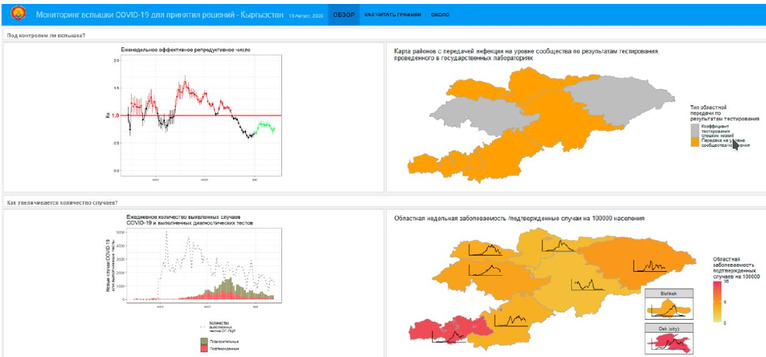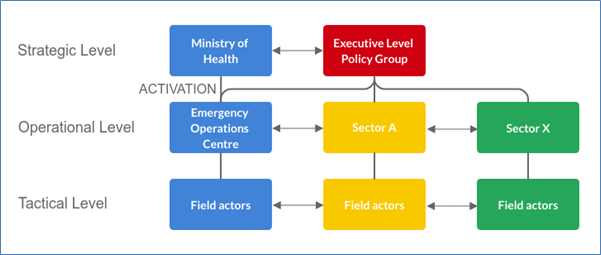COVID-19 monitoring dashboard and support for an emergency operations center and integrated information system in Kyrgyzstan
Project details
Year: 2020
Client: World Health Organization - Country Office in Kyrgyzstan
Objective: Provide technical support to facilitate the monitoring of the COVID-19 outbreak in Kyrgyzstan, the implementation of a public health emergency operations centre, and the development of an integrated public health information system.
Deliverables:
- COVID-19 monitoring dashboard for decision makers.
- Concept note for the implementation of a public health emergency operations centre in Kyrgyzstan.
- Situation analysis report of the current health information systems in use in Kyrgyzstan.
- Recommendations and specifications for an integrated information system for the Department of Disease Prevention and State Sanitary Epidemiological Surveillance.
Performed activities
COVID-19 monitoring dashboard
Monitoring the epidemiological situation, response activities, and response performance is crucial during an outbreak to ensure proper continuous risk assessment and decision-making. For monitoring the COVID-19 outbreak in Kyrgyzstan, a flexdashboard built with the R Statistical software has been developed (Figure 1). All the material and tools needed to produce the daily dashboard have been installed at the Department of Disease Prevention and State Sanitary Epidemiological Surveillance.

Figure 1. COVID-19 monitoring dashboard for decision makers
Public health emergency operations centre
To improve their early detection and timely response capacities in accordance with the International Health Regulations (IHR 2005), many countries are establishing or improving their public health emergency operations centres. An emergency operations centre is a flexible structure, activated for emergency response, that can be scaled to the scope and context of an emergency. To support the implementation of a public health emergency operations centre in Kyrgyzstan, we reviewed existing best practices and recommendations. Results of the review and propositions adapted to the local context have been presented and discussed with the main stakeholders. This resulted in a concept note describing potential location, roles, responsibilities, and activities of a new public health emergency operations centre, along with a roadmap for its implementation and operationalisation in the near future.

Figure 2. Example of lines of accountability of the public health emergency operations centre during an emergency response
Integrated health information system
Kyrgyzstan embarked on an ambitious roadmap to digitalize its health information system and make it more effective. Integration of redundant data collection and data management processes across programmes and healthcare facilities could be a major benefit of the current health information system digitalization. Through several on-site visits and interviews, we mapped current health information systems used in the country. This mapping exercise identified existing databases that could be used for the early detection and management of public health events. After presentation and discussion of the mapping results with the main stakeholders, development of an integrated modular epidemiological intelligence platform was proposed. A list of modules, functionalities and requisites for such a platform was provided along with a roadmap for its development.
